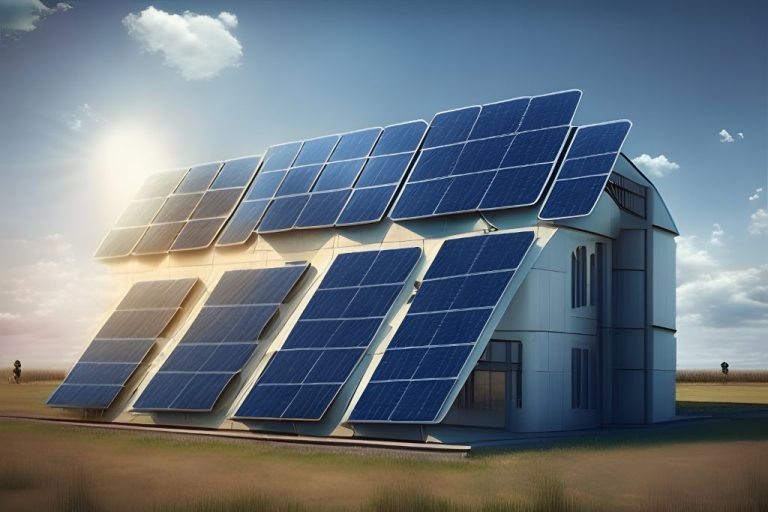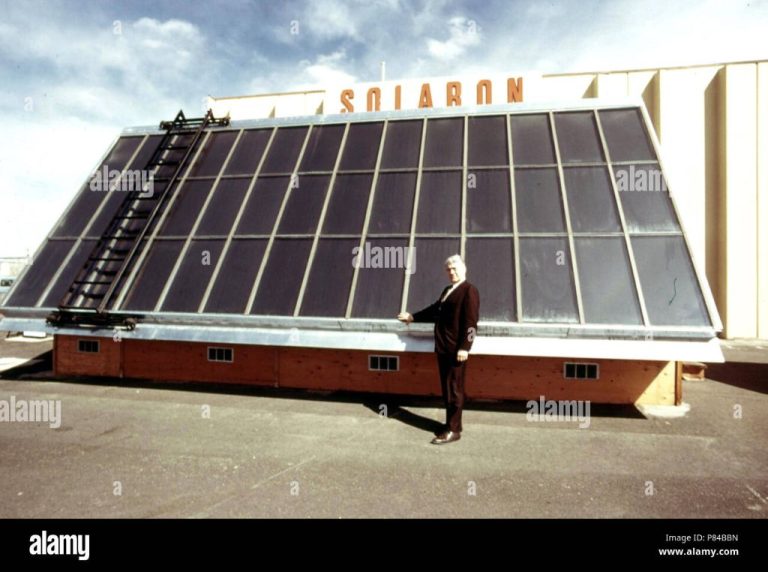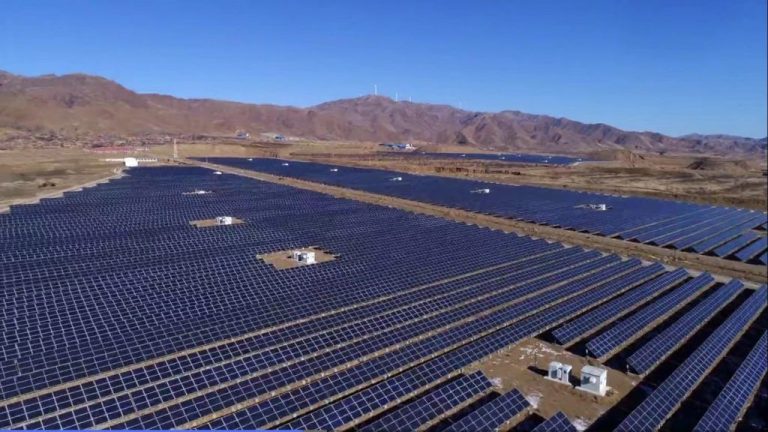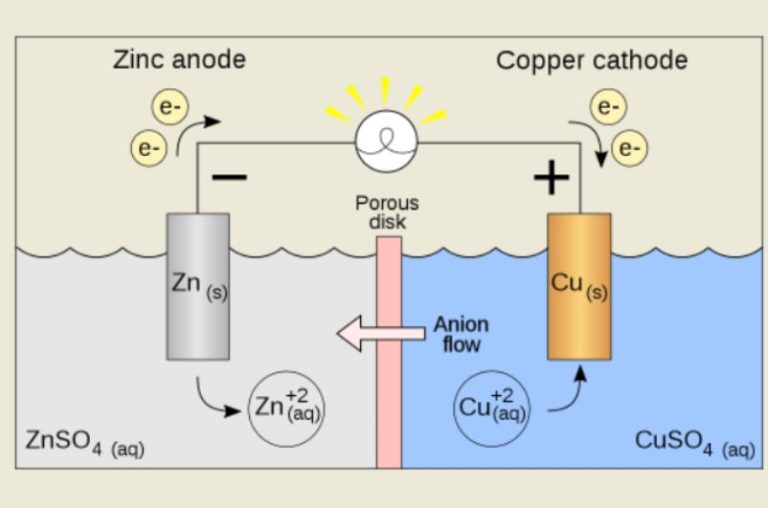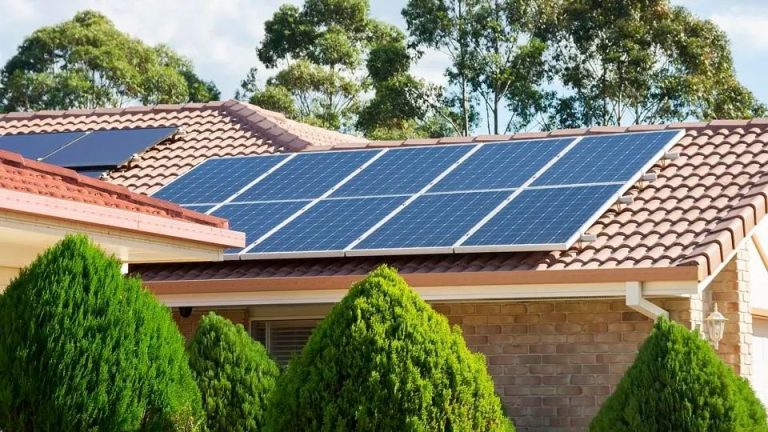Do We Get Solar Energy From The Sun?
We live in a world powered by the sun. Nearly all energy sources on Earth originate from the sun’s light and heat. Solar energy is the technology used to harness the sun’s energy and convert it into electricity, heat, and light. But how exactly do we capture the sun’s energy? Where does solar power come from?
In this article, we’ll explore the origins of solar energy and how we’re able to utilize the sun’s power here on Earth. We’ll look at how solar panels convert sunlight into useful energy and the many applications of solar power in our daily lives.
The Sun’s Role
The sun is the source of nearly all energy on Earth. The sun’s immense gravitational force triggers nuclear fusion reactions, fusing hydrogen atoms into helium atoms and releasing enormous amounts of energy in the process. This energy radiates outward from the sun in all directions in the form of electromagnetic waves and particles called sunlight or solar radiation. Some of this sunlight reaches Earth about 8 minutes after leaving the sun. The sunlight that hits Earth contains UV rays, visible light, and infrared rays. This immense amount of solar energy powers life on Earth and provides the energy that shapes Earth’s climate and weather.
Harvesting Solar Energy
The sun’s energy reaches the Earth in the form of electromagnetic radiation. To harvest this solar energy, we utilize technologies that can convert the light into useful energy like electricity or heat. The two main technologies used are photovoltaic panels and concentrated solar power plants.
Photovoltaic panels, also known as solar panels, are made up of solar cells that directly convert sunlight into electricity via the photovoltaic effect. When photons from sunlight hit the solar cells, it excites the electrons and causes them to flow, generating an electric current. Solar panels can vary in size and power output, from small panels on rooftops to large utility-scale solar farms. A key advantage of photovoltaics is their modularity and ability to distribute power generation.
Concentrated solar power (CSP) plants use mirrors or lenses to concentrate a large area of sunlight onto a small area. The concentrated light is converted to heat, which then drives a steam turbine to produce electricity in the same way as conventional power plants. CSP allows for the incorporation of thermal energy storage, providing power even when the sun is not shining. CSP plants are very large in scale, typically rated at 100 megawatts or greater capacity.
Both photovoltaics and CSP are capable of harnessing the sun’s abundant energy. Ongoing research aims to improve the efficiency and lower the costs of these solar technologies to make them more viable and widespread.
Converting Light to Electricity
Solar photovoltaic panels, commonly known as solar panels, convert sunlight directly into electricity using semiconductors. This process is called the photovoltaic effect. Sunlight contains particles called photons that have energy. When these photons hit a solar cell, their energy frees up electrons in the cell’s semiconductor material. The freed electrons are pulled by the built-in electric field of the solar cell, creating an electric current. The current is carried through wires to power electrical devices or charge batteries.
Solar cells are made of semiconductor materials that have unique electrical properties, most commonly silicon. When sunlight hits the solar cell, the energy frees up electrons in the semiconductor material to move around. The semiconductor has been processed to form an electric field that forces the freed electrons in one direction, creating a flow of electricity through metal contacts on the solar cell. This electricity can then be used to power devices and equipment. The more sunlight that hits a solar panel, the more electricity is produced.
Solar cells are bundled together into solar photovoltaic panels or modules to generate usable amounts of electricity. Solar panels can be used on houses to provide supplemental electricity, and utility-scale solar farms with thousands of panels produce electricity for the grid. Understanding how solar cells convert photons from the sun into electricity using semiconductors helps explain the power generation from solar panels.
Storing Solar Energy
Solar energy presents a unique challenge – it is not available at night when the sun goes down. Methods for storing solar energy are critical for using it any time, not just when the sun is shining. There are a few main ways solar energy is currently stored:
Batteries are the most common way to store solar energy. Most solar panel systems are connected to a battery bank that charges when the sun is out. Then this stored energy can be used at night to power lights, appliances, and anything else running on the solar system. Lithium-ion batteries have become the dominant technology thanks to their high energy density and efficiency.
Pumped hydro is another large-scale storage method. This involves pumping water uphill into a reservoir when solar supply exceeds demand. Then when extra energy is needed, the water is released to flow downhill through a turbine, generating electricity like at a hydroelectric dam. This allows massive amounts of energy storage.
There are also developmental technologies like compressed air storage, molten salt batteries, chemical storage, hydrogen production, flywheels, supercapacitors, and more. Most aim to provide large-grid scale solutions for solar power that can’t be met by batteries alone. This is an area of active research to find cheaper, more scalable ways to store solar energy.
Using Solar Energy
Solar energy has a variety of uses both on a small and large scale. At the residential level, solar panels installed on rooftops can convert sunlight into electricity to power homes and appliances. Any excess electricity generated can flow back into the grid and offset future energy use. Solar-powered water heating systems can also supply hot water for homes. Some small items like calculators and phone chargers can be powered directly by small solar cells.
On a larger scale, giant fields of solar panels called solar farms can generate electricity for utilities to distribute across the grid. These can provide power for entire communities. Large concentrated solar power plants use mirrors and lenses to concentrate sunlight to drive traditional electricity generating turbines. Solar energy can also be used to heat water in district systems to supply hot water to entire neighborhoods or cities. Solar power is increasingly used to provide energy for industrial applications like water desalination and enhanced oil recovery.
As solar panel technology improves and costs continue to fall, there will likely be even more innovative and large-scale ways to leverage the abundant and renewable power of the sun. Some possibilities include electric vehicle charging stations powered by solar canopies in parking lots, solar roads with panels embedded in highways, and floating solar farms on bodies of water.
Growth of Solar
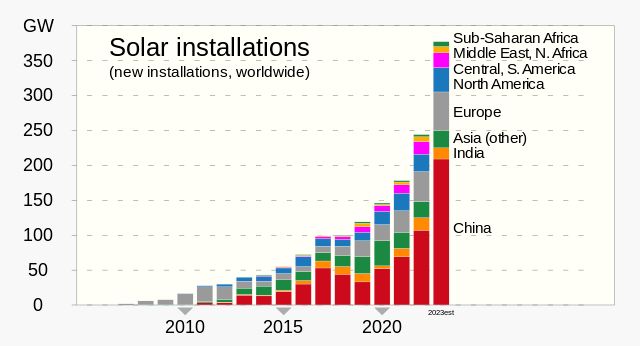
The use of solar energy has grown exponentially over the past few decades. In 2000, the total global solar photovoltaic (PV) capacity was 1.5 gigawatts (GW). By 2010, that had increased over 16 times to 23 GW. In 2020, global solar PV capacity reached 760 GW, showing a 75-fold increase from just 20 years prior.
This rapid growth is expected to continue as solar energy becomes more cost competitive with fossil fuels, driven by technological improvements and manufacturing scale. The International Energy Agency (IEA) projects that solar PV capacity could reach over 5,500 GW by 2040 under current energy policies. With more ambitious decarbonization targets, solar capacity additions could accelerate to average 200 GW per year through 2040.
Many factors account for solar’s remarkable growth trajectory. Costs of solar panels have declined substantially, with module prices falling 90% between 2009 to 2019. This makes the levelized cost of electricity from utility-scale solar competitive with new natural gas and coal plants. Government incentives like tax credits, feed-in tariffs, renewable portfolio standards and tenders have also catalyzed solar deployment. And the modularity of solar allows it to scale rapidly across rooftops, fields, and deserts worldwide. With solar on the cusp of a new era of ubiquity, its unbridled expansion looks set to continue.
Benefits
Solar energy offers many important benefits that make it an attractive renewable energy source. First and foremost, solar energy does not produce any carbon emissions or air pollutants when generating electricity. This can significantly reduce the carbon footprint of homes and businesses that install solar panels. Widespread adoption of solar could help mitigate climate change and improve public health by reducing emissions from fossil fuel plants.
Solar energy is also completely renewable and sustainable. The sun provides an endless supply of energy that will never run out. This makes solar a reliable long-term energy solution, especially compared to finite resources like coal, oil, and natural gas. With solar power, we can generate clean electricity without depleting our limited fossil fuel reserves.
In addition, solar technology allows homeowners and businesses to become more energy independent by producing their own electricity. This decreases reliance on utility companies and the energy grid. Solar customers can generate power even when the grid goes down. The decentralized and distributed nature of solar electricity gives people more control over their energy production.
Furthermore, the costs of solar panels and installation continue to decrease over time, making the technology more affordable and accessible. Solar energy can reduce electricity bills for homeowners and businesses using net metering programs with utilities. Overall, solar delivers environmental, sustainability, resilience, and economic benefits that are driving its rapidly growing adoption worldwide.
Limitations
While solar power has many advantages, it also comes with some limitations that need to be considered. The intermittent nature of solar power is one of the biggest challenges. Since the sun doesn’t always shine, solar panels only produce energy when there is sufficient sunlight. This can make it difficult to rely solely on solar, unless proper energy storage solutions are in place. Even with storage, extended cloudy periods can strain the system.
The storage problem is another limitation for solar energy. Batteries are still relatively expensive and have capacity constraints for storing large amounts of solar energy collected during peak daylight hours for use at night. New storage technologies are helping to improve this, but it remains an obstacle.
Solar power is also heavily geography dependent. Some regions receive much more consistent sunlight throughout the year than others. This can make solar power more feasible and cost-effective in sunny locations. Less sunny areas may not produce enough solar energy to justify the investment in solar panels.
While solar clearly has advantages as a renewable energy source, these limitations around intermittency, storage, and geography do need to be factored into any plans to utilize solar power. Continued innovation and advances in storage technology can help expand the practicality of solar in more situations.
Conclusion
Based on the key points covered, it is evident that yes, we do get solar energy from the sun. The sun radiates an enormous amount of energy in the form of electromagnetic radiation, which reaches Earth and can be harnessed and converted into usable electricity with photovoltaic solar panels. Solar energy can then be stored or used directly to power homes, businesses, and more. The growth of solar power shows the potential of harnessing the sun’s energy, though some limitations remain. With further advances, solar may become an even bigger contributor to meeting the world’s energy needs in a renewable and sustainable way.

